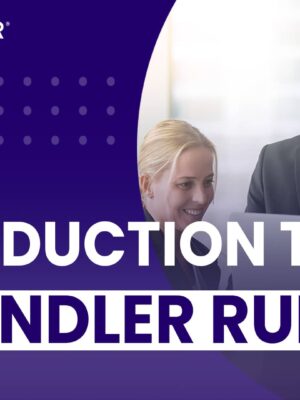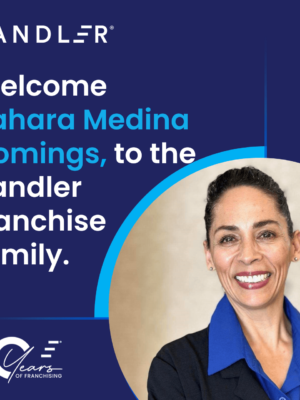Reconstructing the Pieces Of The Sales Puzzle
I first began to recognise the need to be able to benchmark sales performance more objectively and more rigorously over thirty- five years ago. The motivation to do this was strong, because I knew I was wasting thousands – if not hundreds of thousands – of pounds on sales skills training programmes which were not providing me with a proper return on my considerable investment. But I needed to prove my theory because without an accurate analysis of my requirements, I would continue to abdicate that responsibility to the training providers, most of whom had only their own interests at heart.
So, with this quote from Drucker, “The most effective way to manage change is to create it” firmly in my mind, I set about my task – a task that became a journey, which began in 1981 and is still ongoing…
By taking an analytical approach, I arrived at the following equation:
Attitude + Skills + Process + Knowledge = Success
My initial reasoning was this:
- Attitude is fundamental to any achievement, because individuals with the right attitude are far more likely to embrace the essential skills, recognise the control that process brings and have the desire to continually expand their knowledge.
- Skills are the ‘tools of the trade’ and have to be developed on an ongoing basis. They also need to be specific, because too much time can be wasted over-burdening employees with inappropriate and irrelevant skills, without any identifiable plan for their future requirements.
- Process brings organisation, efficiency and control, both for the individual and for management. Effective process provides objective analysis and indicators which can be benchmarked and accurately measured.
- Then there is of course a need to build in Knowledge – and that must include knowledge of products, industry, market sectors, competitors, business, own company and last, but not least, self!
Attitude
Let’s then begin by looking at Attitude. I was fortunate enough to have discovered the “Hertzberg Theory “- Professor Frederick Hertzberg has promoted a theory of motivation which goes a long way forward from the original theory of “carrot and stick”, or indeed its extension ‘The Reward Theory’, still used by many managers and companies to try and exhort greater efforts from their staff.
It stems from two-statements:
- What makes people happy and motivated at work, is what they do
- What makes people unhappy and de-motivated at work, is the situation in which they do it
Hertzberg suggested that managers needed become familiar with three new letters that would become increasingly important in the management of people in the future.
The three letters are:
Q.W.L. – standing for ‘The Quality of Work Life’
Managers, who want to motivate their staff, he said, are going to have to improve their Q.W.L
The first set of needs defined by Hertzberg is called Hygiene Needs and deal with a person’s relationship with the environment. They consist of how people are treated at work.
- Do you pay them well?
- Good working conditions?
- Human relations – the nature and quality of their supervision
- Status
- The nature of the company’s policies and administration
They are called Hygiene Factors, because if the factors are right, they prevent people from being dissatisfied in their working environment, so they keep people from being unhappy and that is their function – but they do not motivate.
The other set of needs of people is caused by the fact that they are human beings and therefore, not only do they not want to hurt, so treat them well (Hygiene), but they want to do something. They want to grow and show what they can do. They want to be able to say at the end of the work experience not that they vegetated, but that they are more than they were (know more, can do more and therefore are more) and the only way to measure this is by what they have achieved in that experience.
They are therefore asking these questions:
- Do I achieve? Am I contributing?
- Am I given increased responsibility?
- Am I advancing and growing?
- Is what I do meaningful and significant? Is its interesting?
- Is my ability recognised?
These are The Motivators. They are the variables that managers can use to motivate people, because people who really want to do something, make it happen – that’s motivation.
So if we want to talk about motivated performance, we have got to talk about:
- Achievement
- Recognition for achievement
- Meaningful and interesting work
- Increased responsibility
- Growth and development
In other words, the quality of the human experience at work.
Skills
I then turned my attention to Skills. I discovered that, to begin with, the one off programme was supplying a short term motivational buzz and provided my team with a number of thought provoking ideas. However, in reality, once they were back at the “front-line” the day to day pressures of hitting quota etc. took over again and the reactive mindset returned.
Then, and it is probably still true today, most – I would estimate at least 80% – training organisations were making the assumption that all delegates were at the same level in terms of experience/expertise and had the same “commercial bandwidth”. This was of course totally unrealistic.
Whilst it is never possible to equate age and experience with success, the reality is that although some professional salespeople do have ten years experience, most have one year’s experience ten times!
The very best salespeople – the ones that consistently exceed expectation – have usually received ongoing skills development from the “emerging” stage, all the way through “advanced”, right up to “consultative” level if appropriate, but the keyword is “ongoing”.
Finally, and this is the most significant and blatant error of judgment most Sales Directors make (I know I did) is that every member of the team receives the same training – i.e. they are all dispatched off to the same course, regardless of whether or not they already have those skills, or if indeed they need to have them in their current role.
The point here is that there is far too little planning, assessing and objective setting. As I said earlier, it is much easier to delegate that responsibility to the training company. The downside to this approach is, of course, so much money is wasted.
I quickly realised that the first step for any company deciding to make a change in their sales approach was to accept that training must be based on what the salespeople need. Itshould be tailored to address diagnosed performance gaps. Using a diagnostic approach, a formal sales team skills audit saves an organisation money and time, because there is nothing to be gained from teaching people something that they are already doing well or, conversely, that they don’t need to do in the first place.
So what did I do? I wrote my own programmes and they eventually became the basis of the Vanguard Suite, but more significantly I designed an attitude/skills/process audit tool which has now evolved into the ASP Profile and is being used by organisations all around the world to regularly benchmark both the development needs and ongoing performance levels of their sales teams. And the most common feedback I receive? “I cannot believe how much money you are saving us”!
Process
In his book “Fundamentals of Selling”, Charles Futrell identifies careful use of selling time as perhaps the distinguishing characteristic of the successful salesperson. Frequently, there are two main pitfalls that even experienced salespeople can fall into in terms of activities. First, they simply aren’t doing enough. What’s enough? Enough telephone calls to make appointments, enough face-to-face calls, enough calls that involve or influence the decision-makers. In general, the more focused sales activity salespeople generate, the greater the number of sales opportunities they can create.
Second, but equally important, salespeople often aren’t clear about how to identify the prospects most likely to have a genuine need for their product or service. Without an objective way to prioritise which prospects to contact first and/or an efficient strategy for contacting them, salespeople are doomed to waste a large percentage of their time.
Another huge dilemma for many salespeople is how to divide their time between servicing existing clients and generating new business from new prospects. A common approach among salespeople can be summarised in the saying “If you throw enough mud against the wall, some of it is bound to stick”. This approach is exhausting, demoralising, extremely unproductive and very expensive in the long term.
In the book “Emerson’s Essays”, there is a section on “Law of Compensation”, which can be summarised simply as “Give more, get more.” This is what most salespeople try to do, so they end up working harder when they should be working smarter. This begs the question – Are your sales activities deciding your strategy or is your strategy deciding your sales activities?
From the Sales Director’s perspective, developing a consultative sales process means developing a comprehensive, formal, realistic and step-by-step outline of what salespeople are expected to do. This is just as appropriate for internal and totally reactive sales teams as it is for external pro-active ones. This outline includes the activity and calls they must make, the relationships they should establish with prospects, the documentation they should use in sales calls, the issues they mustdiscuss and resolve with prospects and the tangible goals they must achieve in sequence, along the path to each sale, in order to achieve maximum effectiveness.
It’s only when such an outline is in place that sales management can be in a position to:
- Monitor the sales force’s activity, progress and results
- Assess issues as they arise and take appropriate action
- Redirect individual sales representatives’ efforts efficiently
Although many organisations appreciate the importance of being customer-focused and talk in vague terms about their “consultative sales process”, surprisingly few sales leaders invest the time and energy required to develop a formal sales process – a process that is at once detailed and resilient enough to guide their salespeople and permit effective management of their efforts.
But I was determined to design a process tool kit which addressed every need my team had, from opportunity analysis to personal organisation, from pipeline development to revenue forecasting, etc. I developed innovative strategies that enabled me to achieve the Holy Grail: Sustained sales growth achieved efficiently, reliably and by design.
And Finally – Knowledge
It is fairly common knowledge that even today, in most industries, a very high percentage of training budgets are spent on “product knowledge” workshops and training sessions. This is understandable to a degree – particularly in the more technical sectors – but what about all the other types of “knowledge”?
The task of selling never becomes any easier and, as competition continues to intensify, sales people will face issues that can be extremely difficult to deal with – i.e. decreased product uniqueness, increased competition within ‘safe’ markets, longer sales cycles and shorter product life spans. Every organisation that intends to survive in the re-engineered environment that arrived with the new millennium must, in my view, respond to those realities.
Today’s clients/customers are looking for vendors who can be business partners, who are willing and able to share risks and who are able to properly manage the entire sales process -not just simply demonstrate products.
Copyright © 2019 by Jonathan Farrington All rights reserved. No part of this publication may be reproduced, distributed, or transmitted in any form or by any means without permission of the publisher.








